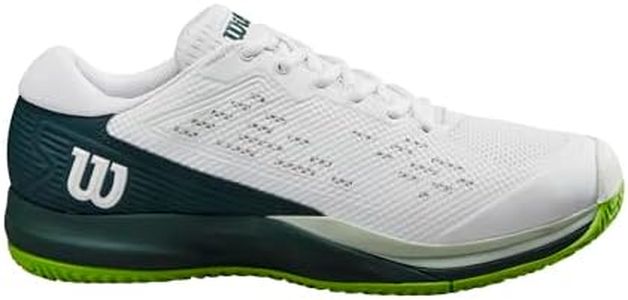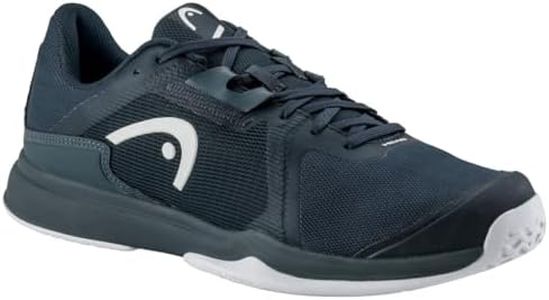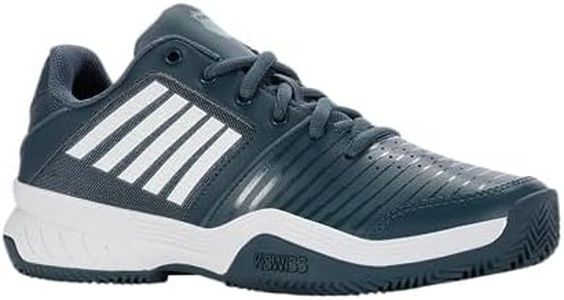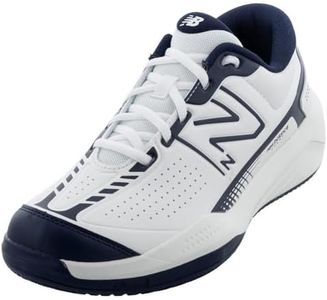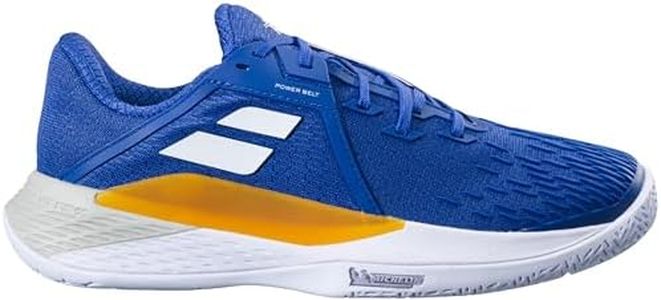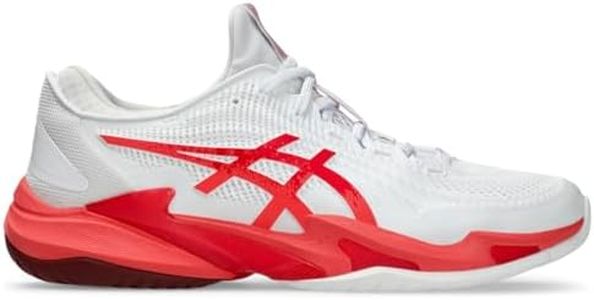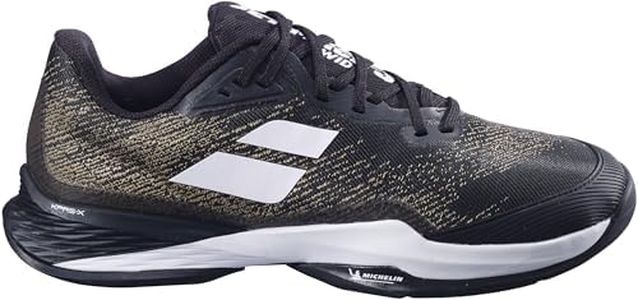We Use CookiesWe use cookies to enhance the security, performance,
functionality and for analytical and promotional activities. By continuing to browse this site you
are agreeing to our privacy policy
10 Best Hard Court Tennis Shoes
From leading brands and best sellers available on the web.Buying Guide for the Best Hard Court Tennis Shoes
Choosing the right hard court tennis shoes is essential for both performance and comfort on the court. When you shop for tennis shoes, it's important to focus on how well the shoe supports your play style, fits your foot, and handles the unique demands of hard court surfaces. The right shoes can reduce injury risk, improve your agility, and make sure you feel comfortable during long matches or practice sessions. Think about your typical movements, intensity of play, and personal preferences before making a decision.Sole DurabilitySole durability refers to how well the bottom of the shoe stands up to the rough and abrasive surface of a hard court. This is important because hard courts wear down shoes faster than clay or grass, and a durable sole will last longer and offer better value. When looking at sole durability, shoes may feature thick rubber outsoles, often with reinforced sections in high-wear areas. If you play frequently or slide a lot, prioritize durability. Occasional players can focus a little less on this, but still shouldn’t ignore it for best comfort and performance.
Cushioning and Shock AbsorptionCushioning is about how much shock the shoe absorbs during each step, which is crucial on the unforgiving surface of a hard court. Good cushioning protects your feet, ankles, and knees from the repeated impact of running and sudden movements. Shoes can range from minimal to highly cushioned. Players with joint sensitivity or who play long matches should go for greater cushioning, while those who value a more connected, responsive feel with the court might prefer less, as it offers better feedback.
Traction PatternTraction refers to how well a shoe grips the court surface, affecting your ability to start, stop, and change direction quickly. Hard court tennis shoes usually feature a herringbone or modified herringbone pattern to provide reliable grip without getting caught or slowing you down. If you’re a fast mover or aggressive player, look for deeper or more pronounced patterns for grip. If you prefer smooth movement or tend not to slide, consider shoes with a less aggressive sole design for fluid directional changes.
Support and StabilitySupport and stability relate to how much a shoe helps keep your foot in place, preventing rolling or twisting during quick movements. This is key for minimizing injury risk, especially on hard courts where abrupt stops are common. Shoes might offer features like lateral support structures, firm sidewalls, or a wider base. If you have a history of ankle issues or play at high intensity, choose shoes with extra stability; for lighter, more casual play, slightly less support may be comfortable and allow more flexibility.
Fit and ComfortFit and comfort are all about how the shoe feels on your foot from the moment you put it on. A good fit prevents blisters, pressure points, and slipping inside the shoe. Consider the width, arch support, and overall shape of the shoe compared to your foot. Try them on with your usual tennis socks and make sure there's enough room in the toe box. For those with wider or narrower feet, seek out brands that offer multiple width options. Ultimately, comfort is subjective, so prioritize what feels best to you during movement.
WeightShoe weight affects both your speed and endurance. Lighter shoes feel less tiring and allow quick footwork, which is great for agile players. Heavier shoes usually offer more stability and cushioning, making them ideal for heavier players or those prioritizing support. If you have a nimble, fast game, aim for lighter options; if you need extra support or play for long sessions, a slightly heavier shoe can help protect against fatigue and injury.
